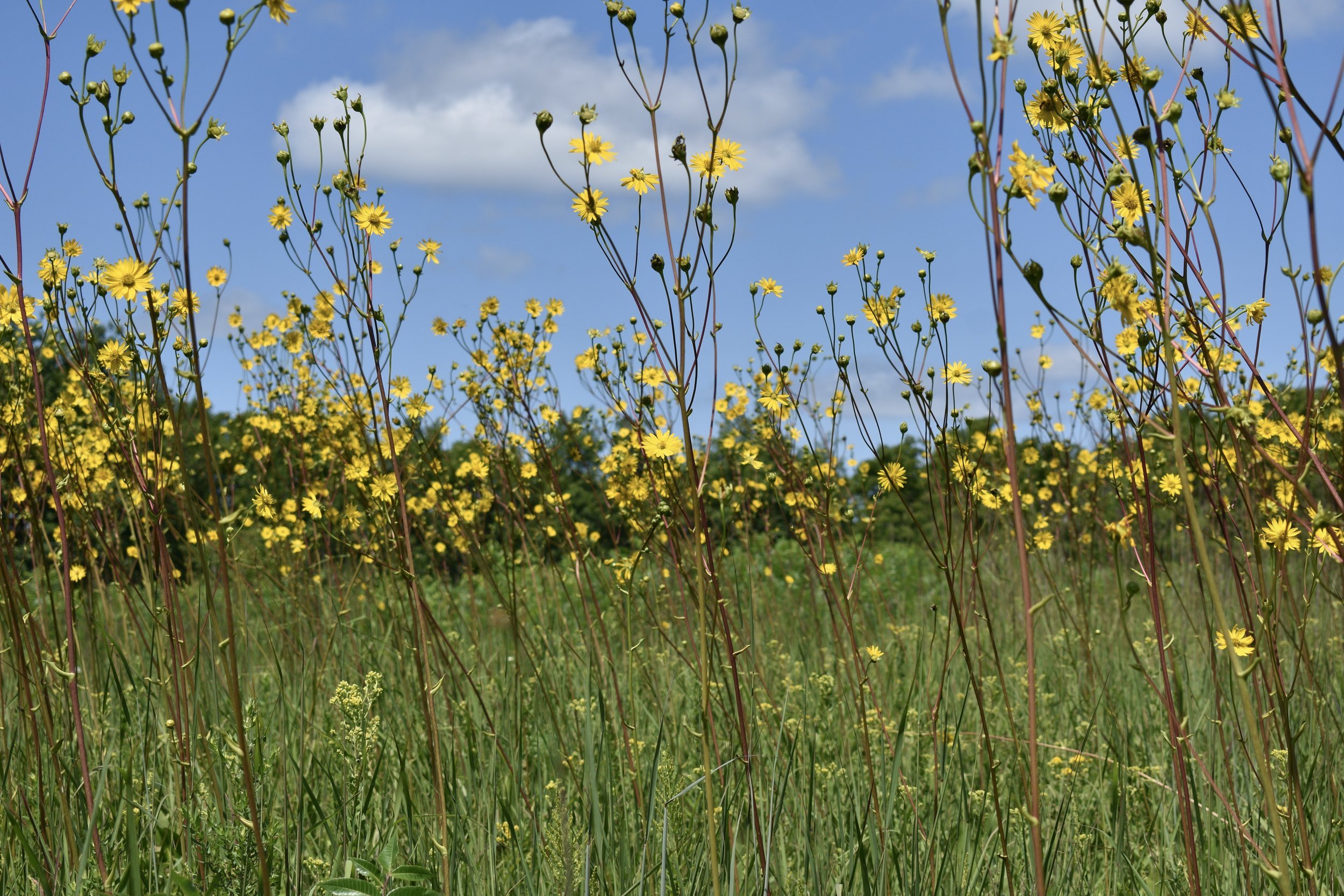A bit of Wisconsin Natural History
Geology:
Before the arrival of Europeans and indigenous communities, Wisconsin's landscape was shaped by glaciers and fire. During the last ice age, a glacier over a thousand feet thick transformed rock into sand, and as it melted over 10,000 years ago, it created the hills and valleys we see today, depositing varied soil types from clay to fine sand.
Historically, savannas in the Midwest, particularly in southern Wisconsin, were dominated by Oaks like Bur and White Oak, which survived fires well and allowed for a rich understory of prairie species. However, over 99% of these landscapes have been lost, primarily due to agricultural expansion following the invention of the plow. Invasive species have further contributed to the decline of the remaining savannas and prairies.
This diversity allowed trees and plants to adapt, leading to one of the most ecologically diverse regions in Wisconsin, characterized by forests, savannas, prairies, and wetlands. The unique climate, where Arctic air meets tropical air, creates extreme weather that native grasses can withstand better than other plants.
Native grasses thrive in varied conditions, including drought and fire. They not only adapted to these conditions but also shaped the ecosystem by promoting fire-dependent species. Indigenous cultures recognized the ecological productivity of burned lands for hunting and gathering.
The prairie moves into your soul over time, sets up housekeeping, and endlessly satisfies you with its nuances. Look again. Listen. - Walt Whitman
Ecology:
Why can’t plant a palm tree in Wisconsin? Because it isn't suited for our cold winters. Some plants from other locations may thrive due to similar climates; they lack natural predators, creating imbalances.
In contrast, planting a native White Oak immediately supports a wide range of wildlife, as its leaves, acorns, and structure serve as food and habitat for countless species.
Expanding this concept to all native trees and plants provides an ecosystem as rich as any National Park. Although our old-growth forests are mostly gone, prairie restoration can occur quickly, taking just 3-5 years to establish diverse native prairies. These prairies can support many insects, birds, and mammals, making them a vital step in revitalizing southeastern Wisconsin's biodiversity. Starting a prairie on your property is one of the best ways to contribute to this goal.


